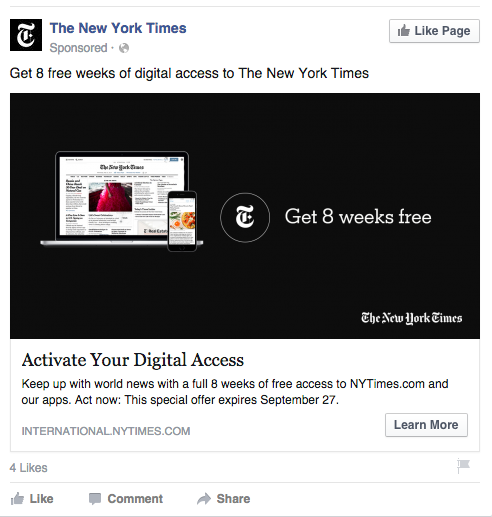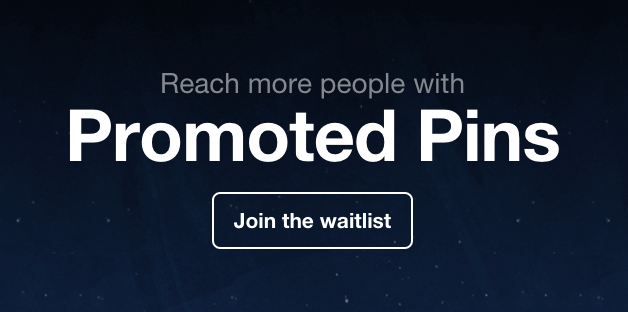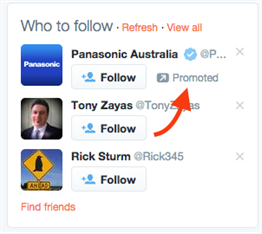You should definitely be open to testing advertising on various social networks.
You will find pros and cons to each, but you will also discover whether paying to promote your content, your product, your landing pages, or your events has true benefits.
Before we move on, though, take a moment to catch up on parts one and two:
- In part one, we give an overview of six of the most common social media platforms
- In part two, we ask important questions that you need to answer to determine which social network(s) are right for your business.
In part two, we asked several questions but left one out. That question is…
Do you have the money to put behind advertising? (And if so, where should you spend it?)
Facebook:
A Q1 2015 ad revenue of $3.3 billion kind of says enough, while two million advertisers can’t be wrong.
Facebook has come a long way in terms of advertising. More advanced targeting techniques and cool features means you can hone in on your specific target market, retarget website visitors through their News Feed, and target those who are on your email list, all within a relatively modest budget.
Now as far as organic reach goes, you’ll find the general sentiment a whole lot more negative: organic reach is down to a pitiful low.
On average, about 2-4 per cent of your fan base will see your posts organically in their News Feed (so if you’ve got 500 fans, you’ll be lucky if 20 people see a post).
I guess that explains why advertising has taken off! Here’s an example of an ad in my own News Feed:

The three main goals of Facebook ads are to:
- Grow your fan base (the number of users who Like your page)
- Promote posts (to increase engagement and activity on your page, and often results in a few link clicks!)
- Create advertisements that send users to your website (these posts are solely ads and do not appear on your page. They will often link to a landing page where users can claim an offer, sign up, download something, etc.)
Twitter:
Twitter and Facebook have been referred to as the “kitchen-sink social networks”: If you’re going to start somewhere, it should be here.
As far as ads go, Twitter has (thankfully!) opened its platform to advertisers around the world – including Australia!
The most common aims of Twitter’s Promoted Tweets are to:
- Increase Tweet engagements (Favourites, Retweets)
- Promote original content (like a new blog post or e-book)
- Publicise an event (and link to a registration page)
- Grow the number of people who follow you
You will likely see Promoted Tweets all over Twitter, in various formats. Promoted Tweets appear right in your home feed, but also appear on the right-hand side under ‘Who to follow’ and brands can also promote a certain hashtag. Here’s an example of a hashtag that has been promoted. It shoots right to the top of the “Trends” column

And here’s an example of a Twitter account (Panasonic Australia; note the grey arrow and text ‘Promoted’) that has been promoted:
LinkedIn:
It’s clear that LinkedIn suits B2B rather than B2C organisations.
Deliver sharable content, contribute to discussions, show off news, new products or exciting developments, and improve your overall public image on a global scale.
The focus on Facebook is friends and family (over brands), but here at LinkedIn, users are focused on and thinking about brands, companies, products, and services.
Advertising can be highly effective (and rather expensive) on LinkedIn, so if you’ve got the budget and if your audience is present, this social network could well be the bridge between businesses that your organisation can leverage.
You can promote new blog posts, encourage new page follows (to grow your follower count), and send users to a landing page.
You can also advertise jobs to highly qualified candidates.
Here’s an ad that showed up in my feed today (it’s a ‘Sponsored Story’). It fits in naturally, but is still identifiable by the grey ‘Sponsored’ tag:
Google+:
Many people’s sole justification for using Google+ is the impact it can have on SEO.
Google+ is very quiet at times (cue the tumbleweed), but posts can be indexed for search, so make sure you’re creating quality posts that contain variants of keywords associated with your business, brand, product, and service.
You can also format posts to make them visually more appealing. You can add line breaks, italicise and bold text, and use hashtags. Moreover, if you’re on YouTube, you can link your channel to your Google+ page.
No word yet from Google as to whether the disconnection between regular Google accounts and Google+ accounts will affect businesses, or whether businesses should continue using Google+.
In April 2014, Google+ introduced +Post Ads to Google+ pages with more than 1000 followers. Users could use their AdWords account to promote their G+ content across the two million sites in Google’s display network (so not on Google+ itself).
You can find out more about +Post ads here.
YouTube:
YouTube videos are taken into account in the search engine results (as we have said before, Google owns YouTube!)
You would have no doubt noticed that when you search a certain term on Google, you’re shown varied formats in which you can seek information.
That is, you’re presented web pages, images, books, YouTube videos, scholarly articles, shopping products, Tweets, and more.
People like to consume content in various ways, so Google is immediately satisfying all user needs by promoting the top content, relevant to your search, but in various formats – one of these being YouTube videos.
Your videos can be embedded in blog posts, landing pages, and more.
From any location where your video is embedded, each view counts towards your video views, and users can also follow the links in your embedded video to find your YouTube channel.
Any video uploaded to YouTube can be an ad, and they can appear before a video, in search results, or to the right of playing videos.
You control how much you want to spend per day, and you’re only charged when someone engages. So if someone skips your ad “before 30 seconds (or the end) you don’t pay a cent!”
Instagram:
Instagram, bought out by Facebook in 2012 for $1 billion ($300 million in cash; the rest in Facebook stock) requires careful thought.
You have to:
- Share visually appealing and captivating images
- Balance product images with lifestyle images
- Use popular, relevant hashtags (the limit is 30 per post, but you should stick to around five to keep your caption looking quite neat)
- Like, comment, and follow accounts yourself
- Tag other brands in your images
- Inspire
- Post regularly (like once a day, or at minimum, 4 times per week)
- Be personable, friendly, human, and optimistic
- Experiment with videos
Be smart when it comes to choosing the URL in your bio. This is the only clickable link on Instagram; links within specific posts and in comments are not clickable.
You can use a tracking URL such as bit.ly to measure how many website visitors are coming to your site through Instagram.
Instagram is very similar to Pinterest as that it is a totally visual platform. You need to be aspirational, and you should promote a passion rather than a product.
As far as ads go, Instagram recently followed big brother Facebook by introducing paid ads to US advertisers in October 2013.
In September this year, Instagram announced that they would be opening their advertising platform to businesses of all sizes all over the world. Woo hoo – now it’s not just the big guys that have the opportunity to advertise. You can read the official announcement on Instagram’s blog.
Instagram explicitly values simple, clear, and high quality images when advertising.
Pinterest:
The following Q&A from Pinterest CEO Ben Silbermann might come as a bit of a head-scratcher:
Is Pinterest a social network?
Pinterest is, says Silbermann, a “catalogue of ideas. I think that’s a very different thing than a social network”.
Pinterest’s focus is on inspiring, and Silbermann believes that when people pin, they are doing it for themselves. Brands, however, should examine closely their niche and pin relevant content that appeals to your ideal target markets.
Each pin should have optimised descriptions incorporating keywords where appropriate. Timing is no longer the main ranking component when it comes to Pinterest searches; their new Smart Feed prioritises quality images over how recently they were pinned.
Promoted Pins are Pinterest’s foray into advertising. They are currently only available to US businesses, but you can join a waitlist for when the program expands. This is what you’ll see when you visit the advertising page if you’re outside of the US:

Promoted Pins aim to increase awareness, engagement, and traffic. They are also a driving factor for instant purchases (so there is huge potential for e-commerce brands here).
Choosing social networks for business
Making careful and considerate social media decisions is not easy. You need to do your research, a bit of thinking, and a lot of testing.
No one knows your business better than you, and you have permission to choose the social networks on which you want to be present.
Does the social network have a clear correlation to your brand, you tone, your content, and your product? Are your fans there? And does it just make sense? Then you might well be onto a winner!
Liked this post? Why not share it! Use the buttons at the top of the page.
